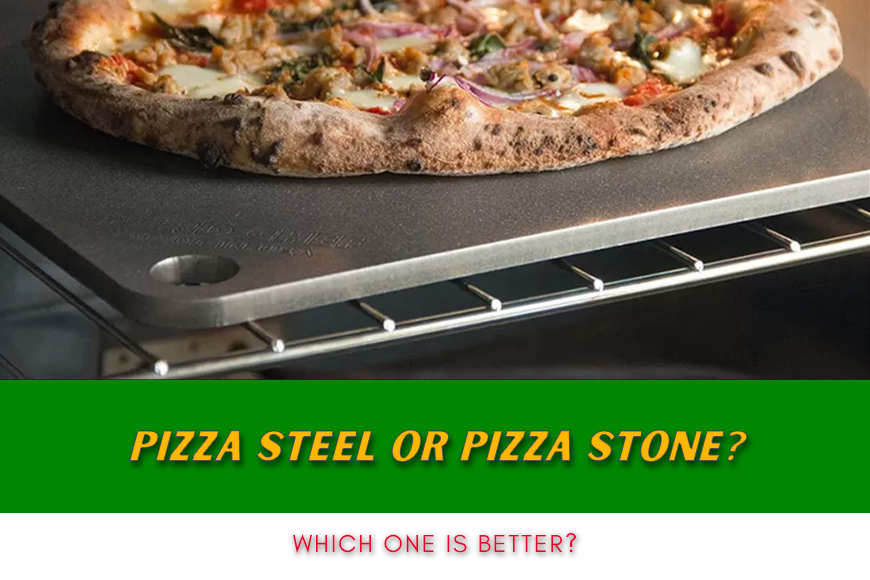
Pizza Steel or Pizza Stone? None!
Last updated on November 12th, 2023 at 07:17 pm
Pizza steel vs pizza stone – which is the better?
There is a common belief that to improve your pizza at home you should buy a pizza stone. As an alternative the new trend is to buy a pizza steel to get similar improvement. But where is the truth? Do you really need any of them to make a more professional pizza? And if so, should you buy a pizza stone or a pizza steel?
To let you better understand I am going to share a bit of experience and arguments to keep in consideration in case you are exploring this topic. Consider this article as a different opinion to let you think deeper. In fact at the end we are going to also consider a valid and cheap alternative to both pizza steel and pizza stone.
In this article:
- Why to Buy a Pizza Stone
- What Pizza Stone for Home Oven
- Should you buy a pizza steel for oven instead?
- Pizza Stone vs Pizza Steel
- Don’t buy: the pizza steel alternative
Let’s the battle pizza stone vs pizza steel begin!
Why to buy a pizza stone
First of all we need to think at the reasons to buy a new pizza accessory. So, why do you want to buy a pizza stone in the first place?
The most common reason you want a pizza stone is because you heard or found out that it will help making a better pizza. This is especially true if you like Italian round pizza or found a recipe for Neapolitan pizza and you read that you need to bake this pizza in just a bunch of seconds. Of course this is something you cannot normally do in a home oven. Therefore you are searching for some kind of help.
I confirm that pizza stones or pizza steels will contribute to increase the baking speed and improve your pizza making. But how?
Well, let’s consider the most important contributions you get: 1) baking temperatures a stone can guarantee; 2) the direct contact of the pizza dough with a pre-heated surface.
Baking temperatures
Regarding temperatures, it is true that both pizza stone and pizza steel accumulate the heat in a way that makes them particularly hot. If you position correctly those pizza accessories in your oven you can get higher temperature than the maximum one declared for your home oven.
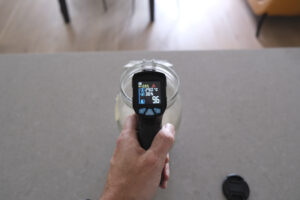
I know that this sounds a bit weird. But believe me when I tell you that I normally get 8% to 10% higher temperature on the surface of the pizza steel than the one of the oven. This is in part because the oven temperature sensor is positioned in a specific place. So it does not always capture the real amount of degrees you have. But at the same time materials accumulating the heat contribute to reach a more pizza friendly temperature.
Of course, don’t expect to get 450 Celsius to make Neapolitan style pizza in a home oven!
Direct contact of pizza dough (or pizza pan or sheet tray)
When you use a pizza stone or a pizza steel you are getting the opportunity to bake your pizza directly on a hot surface, avoiding a “man-in-the-middle” baking tray or a pizza pan. Thanks to the direct heat transfer from the stone or steel to the pizza dough you get some help to “push” a faster development of the crust. Therefore you should be able to make the classic Italian round pizza with airy crust on the borders (the so loved cornicione).
But the same concept is also valid in case you use a pizza pan or a sheet tray. In fact you can put them in direct contact with a very hot surface like the stone or steel and get the heating released from them strongly and for a longer period of time. Once again you can obtain a more airy crust.
Remember that the first baking seconds (or minutes, depending on the pizza style you are making) are absolutely key for the development of the crust. The faster you increase the temperature of the dough, the better your crust will develop.
But not only! Because using this way of baking leveraging a very hot surface makes possible for example to bake different pizza styles in home oven.
Remember though: there is no magic. You can get some help but you are not going to revolution your end result as you are using a Neapolitan style pizza oven!
What pizza stone for home oven
Now that we know more about why to buy a pizza stone, let’s explore what to buy.
The market offers a lot of different pizza stones for home oven. In reality though we mainly have two stone types for pizza making: biscotto and cordierite. In this short article we are not going to analyze deeply the difference between them. But you will get enough information to understand why one is a no-go at home.
Biscotto vs cordierite – which one is best?
The first pizza stone type we are reviewing is made of same material that you find in a traditional Neapolitan pizza oven and it’s also known as “biscotto” in Italian. It’s actually a clay brick. In fact we should not call it stone but we should rather use its original term biscotto. If you are curious, the word biscotto is fully Italian. Translated to English it would be “cookie” and often it is a hand made product. One of the most famous brands producing the biscotto is Saputo.
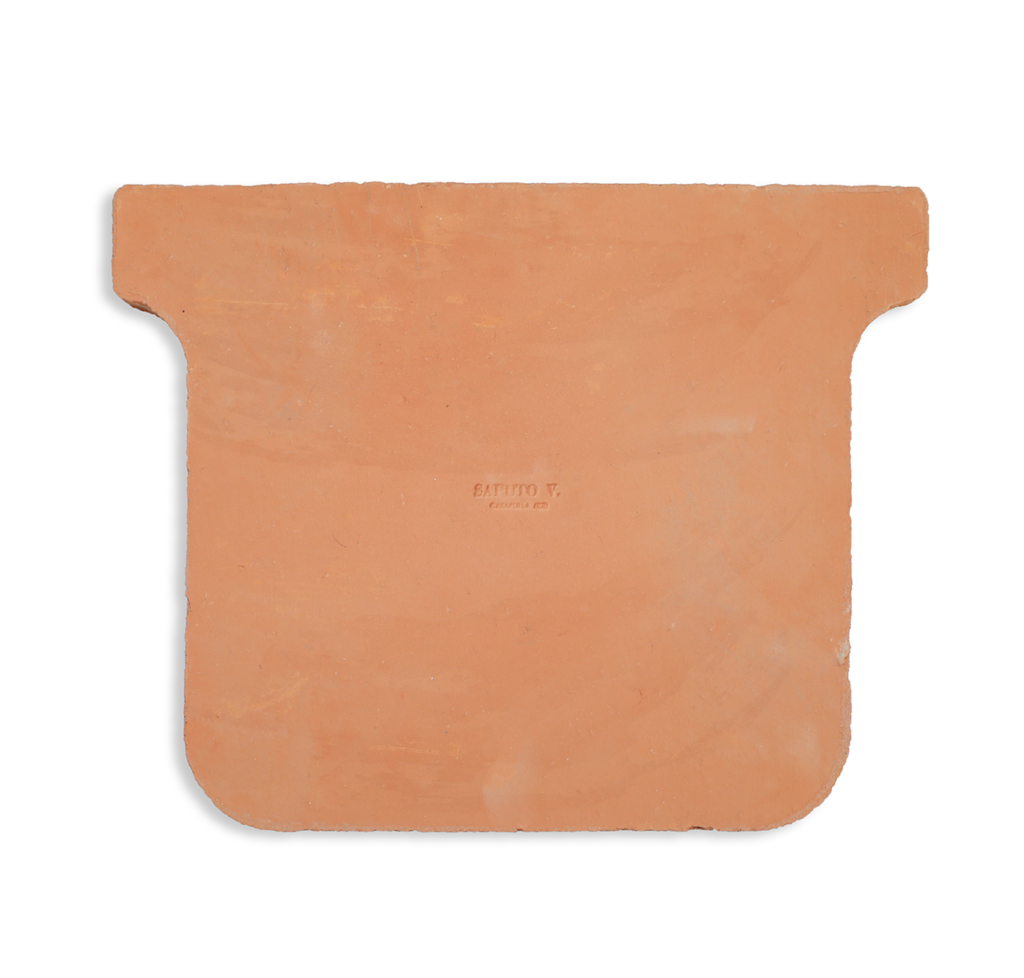
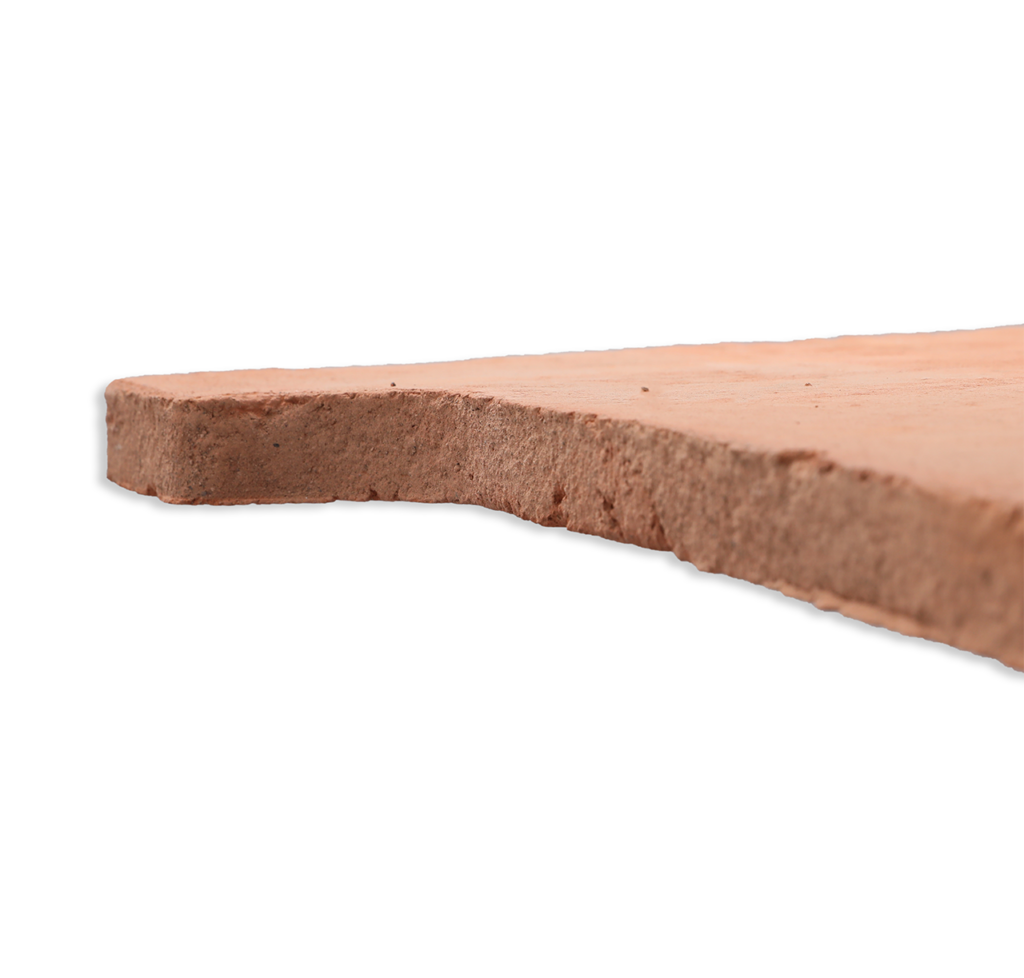
The second pizza stone is made out of cordierite. This really is a stone and it’s very different than a biscotto. On the consumer market this is the stone that you are going to find easily. For example if you search for pizza stone on Amazon you will be almost for sure buying a cordierite stone. Actually there is also a third pizza stone type which is made of ceramic. This is very similar to cordierite but I don’t have experience with it so I can not share any opinion.
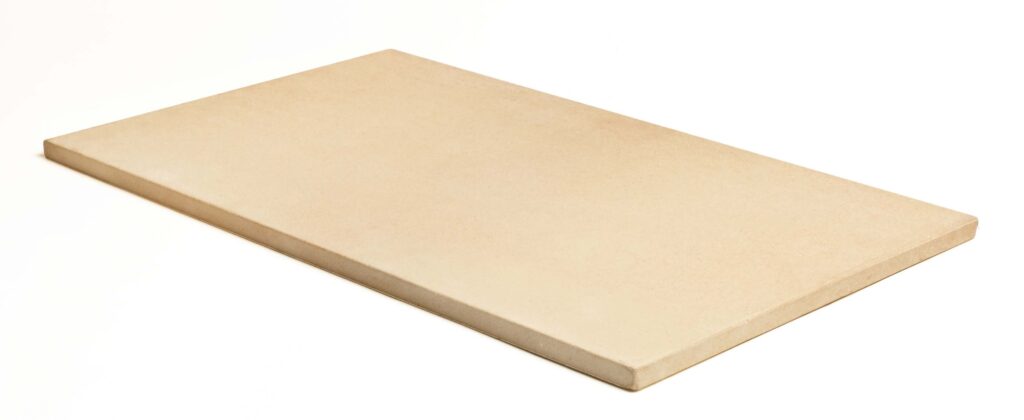
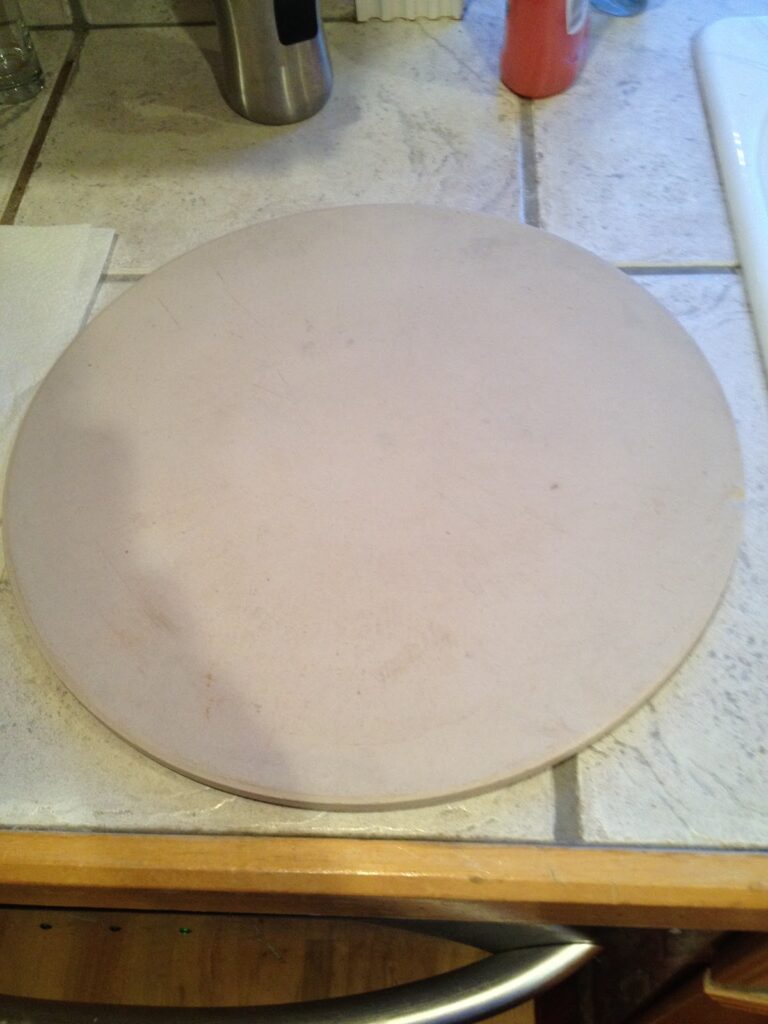
Generally biscotto comes with a thickness of 2,5 or 3 centimeters. The latter being the favorite especially for Neapolitan pizza. On the other end cordierite pizza stone is generally thinner with an average of 1,5/2 centimeters.
A biscotto takes much longer to accumulate heat.
Once in temperature you can bake pizza fast
but in a very delicate way.
The huge difference between the two stones reveals during baking. A biscotto pizza stone takes much longer to accumulate heat. Once it is in temperature you can bake your pizza fast but in a very delicate way. The heat is in fact not released to the pizza crust in a violent way. With cordierite you have the opposite effect. The pizza stone temperature is reached slightly faster and the heat is transferred to the pizza crust much more aggressively.
Practically speaking a biscotto pizza stone helps to keep the pizza crust soft. While with cordierite pizza stone it is a bit easier to bake crunchy pizza crust (which is also why it is not always ideal for Neapolitan pizza).
Cordierite pizza stone: only option for home oven
Let’s make it clear immediately: biscotto pizza stone should not be used in a home oven. For a simple reason: it takes too much to heat. Actually it is highly possible that it will never reach the temperature you need. This type of pizza stone is thick and is meant to be used with high temperatures. So for example using a biscotto Saputo in Ooni Koda oven makes sense. But that’s because Ooni koda (or any other Ooni pizza oven) works at 450/500 Celsius!
However sometimes also in a dedicated Neapolitan pizza oven a biscotto is not really ideal. For example I personally think that baking in Ooni Koda 16 with a biscotto is less effective than using its original cordierite stone. I believe that a pizza oven should be engineered to be used with biscotto stone. So you can’t replace one for another that straight.
From what I am saying you probably also understand why I believe that cordierite is better for home oven. First of all you can get the temperature faster. Second it comes with some kind of flexibility. In fact you can either bake pizza directly on stone or you can use a baking tray or a pizza pan. For sure it is not recommended to use a baking tray on a biscotto stone.
If you are interested in buying a pizza stone you can select one of the options below:
| Unicook Pizza Stone 15 X 12 Inch | https://amzn.to/47dYgJn |
| Round Pizza Stone, 16" | https://amzn.to/3Spi5Jx |
| Extra Large Pizza Stone | https://amzn.to/3Qq2dUL |
Note that they are Amazon affiliate links, so I will get a small commission if you buy from them. This will help me bringing the website alive.
Why you should buy a Pizza Steel for oven instead of stone
A pizza steel is an excellent alternative to a pizza stone.
As the name implies the material here is what makes the difference between the two pizza baking surfaces. Sometimes is also called baking steel and like in pizza stones world the market sees a lot of different brands offers. I collected some of them on my Amazon Store.
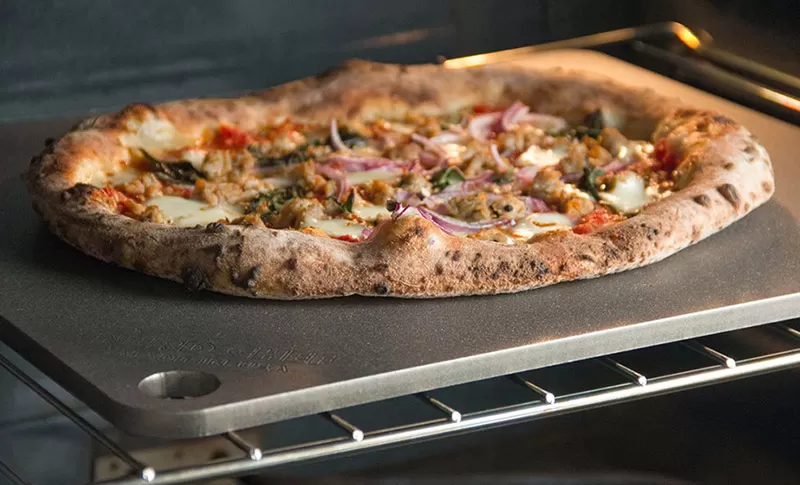
Baking on a pizza steel follows the same principle of the pizza stone. Steel accumulates heating from your oven, reaching a very high temperature. Then you can lay pizza dough directly on the steel surface, leveraging again the direct heat transfer we have discussed before. In conclusion, from a pure pizza baking perspective, you should obtain same benefit of a pizza stone, more or less.
However, pizza steel releases the heat a bit faster than stone. So in in principle you can use a less thick steel than a pizza stone. I consider this one already a good advantage. In fact from a practical perspective the steel is a bit easier to manipulate and it reaches the baking temperature in shorter time. This makes the baking very effective, especially in a home oven where we can’t normally reach high temperatures.
If I would buy today a new baking surface for my home oven it would be a baking steel. And to explain you further why I want to analyze the real practical differences between pizza stone and pizza steel.
If you are interested in buying a pizza steel you can select one of the options below:
| Pizza Steel for Oven (13,6'' x 13.6'') | https://amzn.to/3tTPrpL |
| Pizza Steel for Oven 13.5"x10"x¼" | https://amzn.to/3SHi8Rt |
| NerdChef Steel Stone .375'' thickness | https://amzn.to/45Wgnme |
Pizza Stone vs Pizza Steel
What are the differences between a pizza stone and a pizza steel? Why should you buy one or the other?
We understood up to this point that they both contribute in baking pizza dough in a faster way, especially in home oven. The big differences are in maintenance and preparation for the pizza dough baking.
I like clarity so I made a table to make it easy for you to read. You will find 4 categories or characteristics to compare with a value from 0 to 4. As you will soon realize the more the better. And the winner is pizza steel.
| Characteristics | Pizza Stone | Pizza Steel |
|---|---|---|
| Preheating: |
|
|
| Cleaning: |
|
|
| Storage: |
|
|
| Heating transfer: |
|
|
Let’s review line by line the meaning of the category and why I gave the green or the red vote.
Preheating
Pretty obvious situation. This category refers to how much time a pizza stone takes to heat and reach the desired temperature.
In this case steel is faster in reaching the temperature. Remember though that in both cases it is recommended to heat the oven for at least 45/50 minutes before baking pizza. So don’t really follow the oven saying that it is ready after 10 minutes. Get instead one of the very inexpensive laser thermometer. It will help you a lot to understand how hot is the pizza steel or stone.
Cleaning
The web is full of resources explaining how to clean pizza stone. And I guarantee you: it can be a pain in the neck! The problem is that stones tend to absorb liquids. So if some pizza sauce goes on the stone you will have for sure a spot that will be hard to remove.
Ideally to clean a pizza stone you should be using thermal cleaning pyrolysis. But most of the times you can’t do it in a home oven where is almost impossible to reach the needed high temperature. So pizza stone cleaning requires at least a brush, some water (not too much!!) and a lot of efforts. Keep in mind that some spot will stay there for long time but this is not an issue at all for baking more pizza 😉
Cleaning the pizza steel is just slightly easier. Especially if you seasoned the steel it should not be a big deal but still also with this material spots are behind the corner. In any case, you can simply take a kitchen towel paper and remove the excessive dirt as first step. Then you can use a spatula to remove harder and stickier food. If this is not yet enough then a soft brush with a bit of water will normally complete the cleaning. Make sure to clean the pizza steel after every baking session but not before it cooled down!
Between pizza steel and pizza stone I still think the first is better to clean.
Storage
How do you store a pizza steel? And what about storing a pizza stone? In both cases you have to deal with a pretty heavy kitchen accessory. But the clear winner is the baking steel. Here is why.
First of all, no matter what you want to buy, it is best to find a place in the kitchen that is not too high. You definitely don’t want to take the weight of the pizza steel or the pizza stone from an high cabinet. I heard that somebody stores them in the oven for simplicity. Personally I don’t really like this option. I often use the oven to bake other food, not pizza. So it is not convenient, from my point of view, to always have a stone in it.
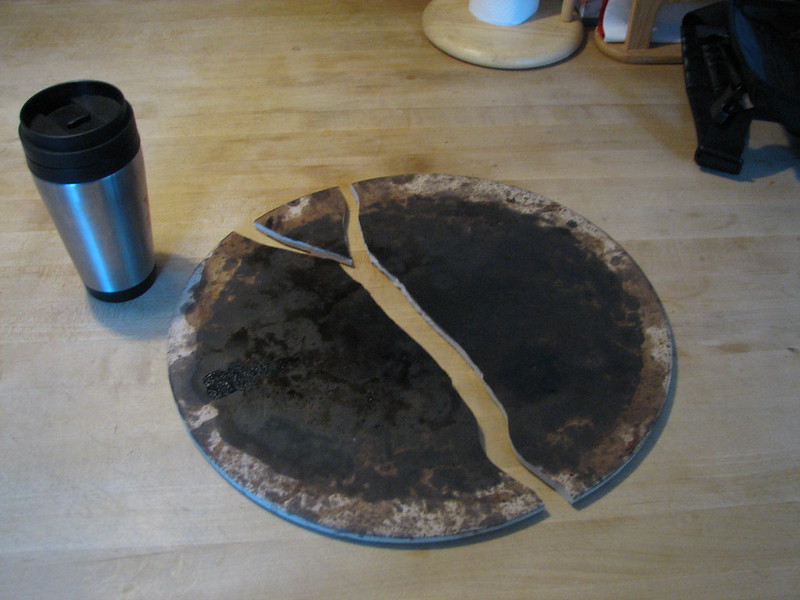
The real difference when it comes to storing is the risk of breaking the pizza stone. If it falls down you will most probably damage your floor. But if this issue is same also with steel, at the same time it is highly possible that your pizza stone is broken. This is why I think the pizza steel is a little bit easier to store: it is much less prone to breaking.
Heating transfer
For heating transfer I mean how fast the heat is transferred from the stone or steel to the pizza dough we are baking.
Pizza steel transfers the heat in a slightly faster way than pizza stone in my opinion. Considering we are using it in a home oven this is no doubt an advantage.
Of course we need to always keep in mind that we are searching for a way to bake pizza faster in a oven that normally does not work with high temperature. Therefore, having a slight advantage in transferring faster the heat to the pizza dough is more than welcome in this specific scenario. Of course everything was changing if we were using steel as baking surface in a Neapolitan pizza oven. In that case steel would be too aggressive!
And now, are you ready for the big recommendation?
Don’t buy anything: the pizza steel alternative
If you want to save money to make pizza I have a very good alternative to both pizza steel and pizza stone. It’s something you most probably already have at home and I find it incredibly effective.
I am talking about the baking sheet or baking tray that is provided as accessory with your home oven. At least in Europe you get one or two of them when you buy a new home oven. If not you can easily buy them. They are made out of a metallic material, generally steel:
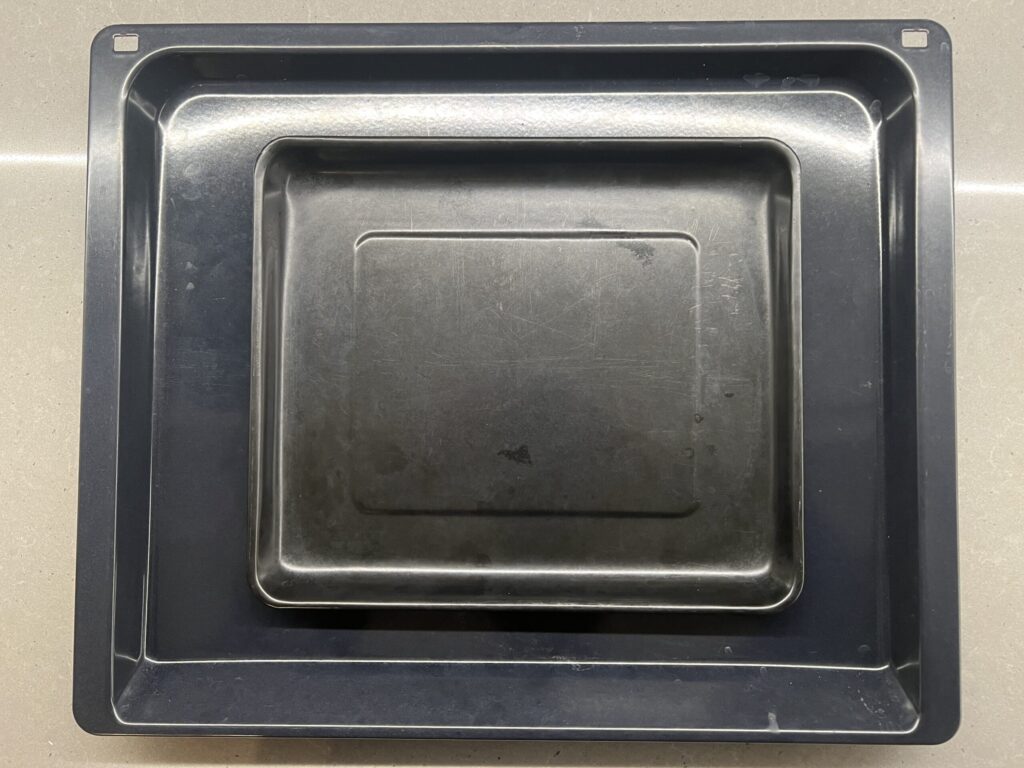
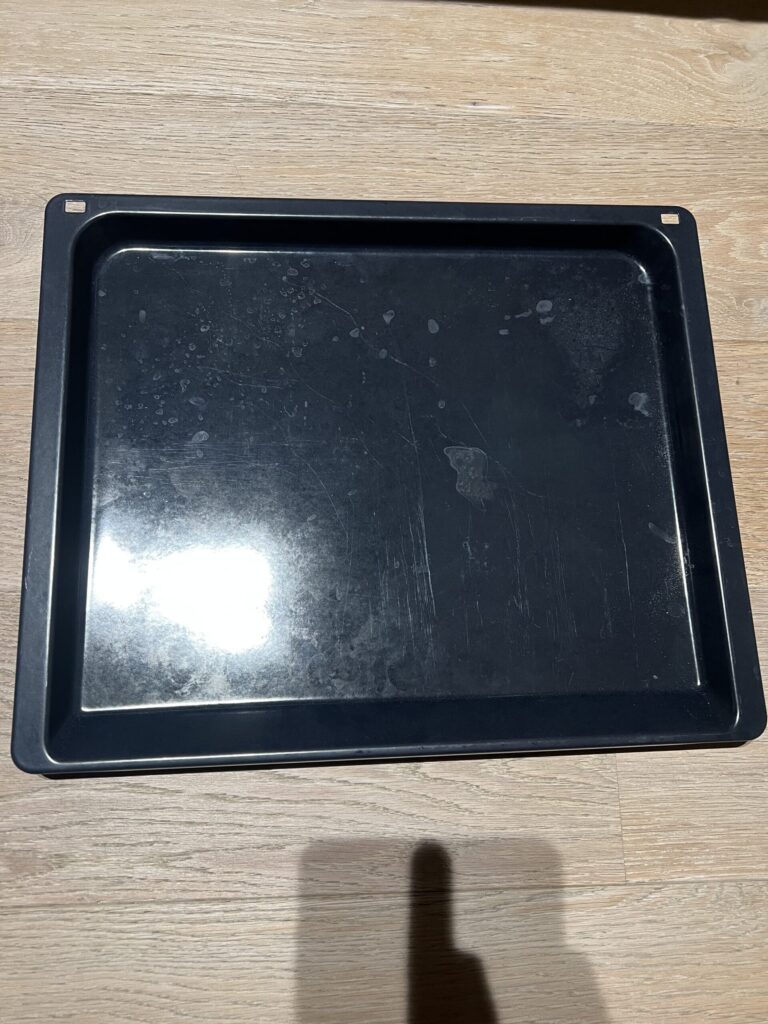
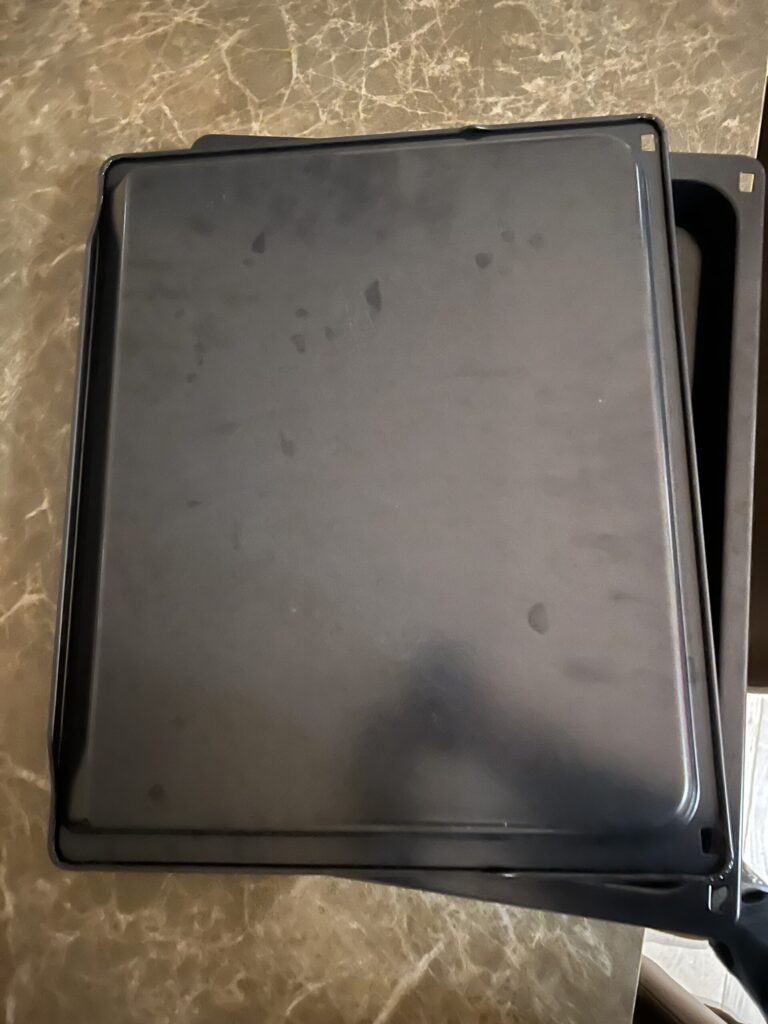
In the picture you can see a big one (40x30cm) and a small one (20x30cm). I normally use the big one (second and third picture). You can essentially turn it upside down and use it exactly as it was a pizza steel!
I guarantee you that results are amazing and 100% comparable to a pizza steel. Here is my last experiment results:
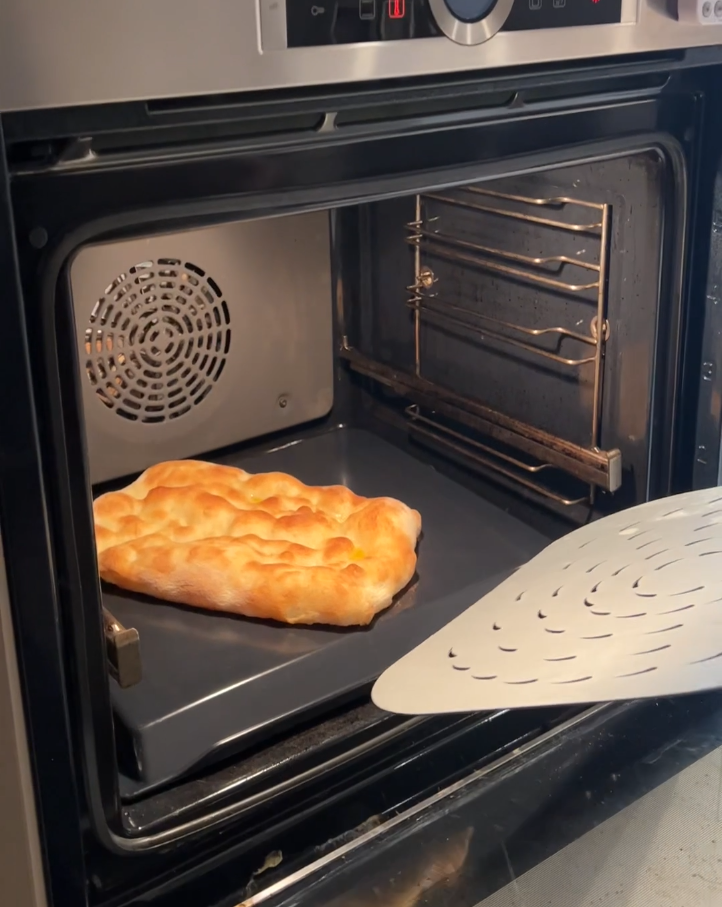
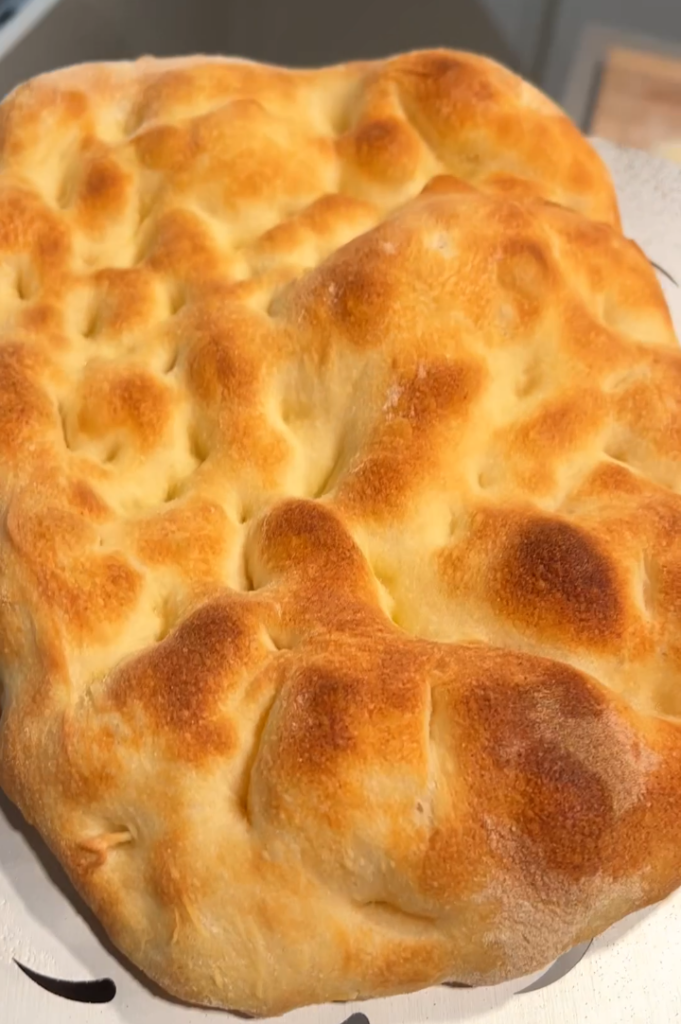
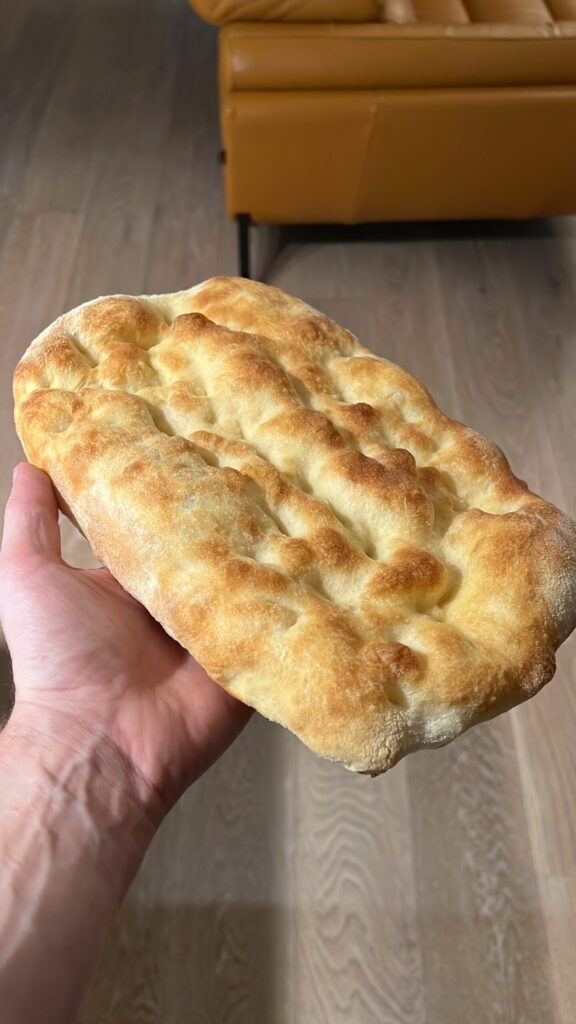
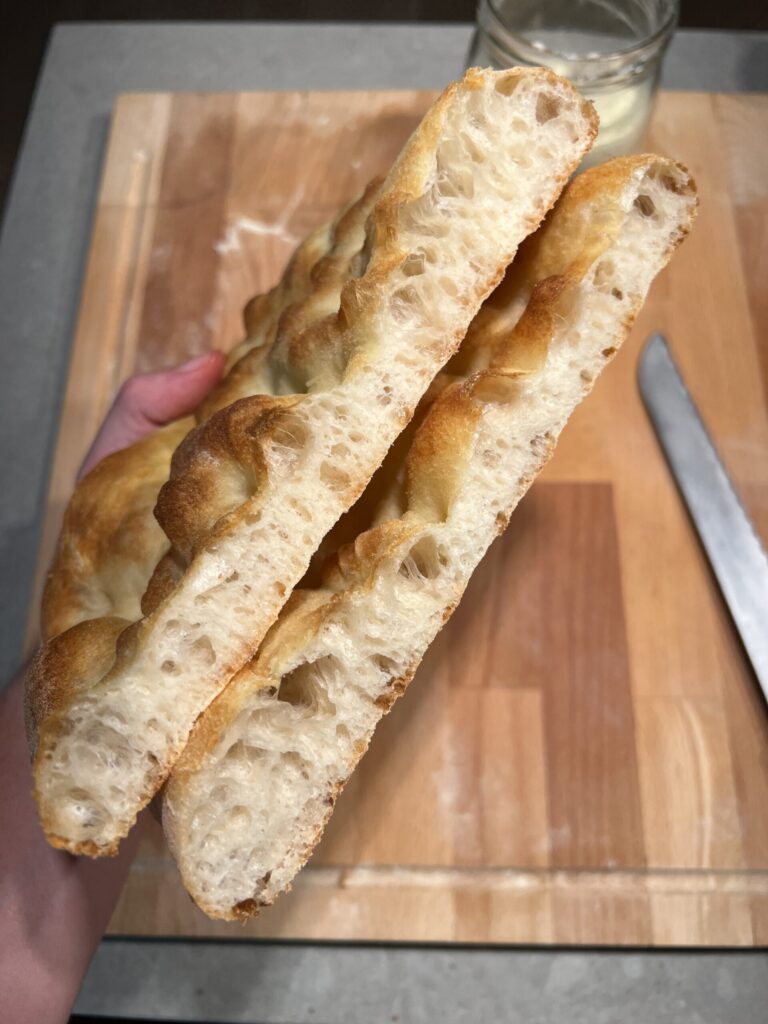
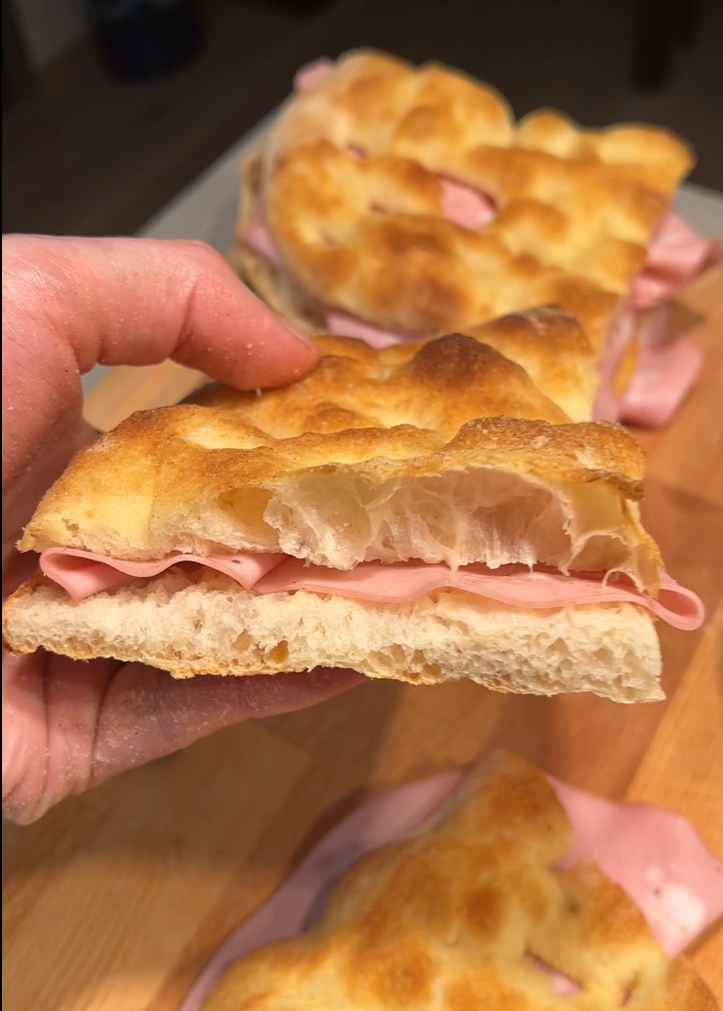
Above you can see a high hydration pizza dough. Normally you need a professional oven to get such results. But thanks to the home oven baking tray you can do it at home!

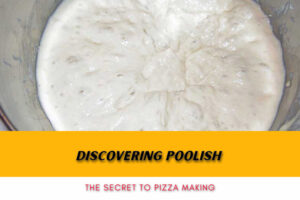
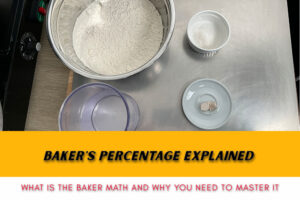
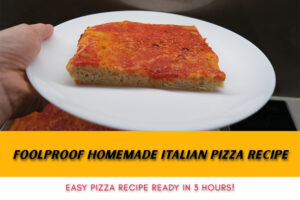
5 Comments
Hi,
Thank you for the information. I have both at home, but do you know which one is best to keep baking pizzas for a long time, for example when you give a pizza party? So my question is, which material stores heat the best and is the best in turning out great pizzas during a whole evening? Thanks in advance.
Greetings from Belgium,
Benjamin
Hi Benjamin,
I would say that from my experience they are very close.
Consider that in home oven you have a huge dispersion of the heating every time you open the door. Plus, once the pizza is on the stone or steel the heat is released to the pizza dough and then the baking surface needs to accumulate the heat again.
So I would say that none of them are great for long use.
However, if I had to chose one, I would slightly prefer the steel 🙂
Thank you Stefano for your answer,
I am thinking about starting a small pizza business. This would be an operation with a party tent and two double deck electrical ovens which reach 350 degrees celcius. But I don’t know if this is the way to go if you would like to keep turning out great pizzas again and again (due to the loss of heat). I like my pizzas to have some serious crunch, so I thought a wood oven would be too warm which isn’t good for crunchy pizzas. What do you think I should do?
Hi Stefano, what is actually a trick behind turning a regular baking sheet upside down to get better results? I mean I am thinking about getting a solid (1 cm thick) pizza steel made out of carbon steel. I want to use it mainly to bake my sourdough bread and of course also to bake pizza. Do you really think it is not going to make a significant difference if I use a solid baking steel? I mean it just sounds logical to me that the steel can accumulate lots of heat which will be then released to whatever I bake on it.
Thanks!
Hi Brano,
Good question.
Turning the baking sheet upside down is to have a larger and flat surface where you can put your dough. So it’s more about convenience.
Of course having a baking steel is better. It will help you with more consistent baking and with an overall better result 🙂 the baking sheet option is an alternative if somebody does not want to invest anything or wants to give a try to pizza making as a starting point 🙂